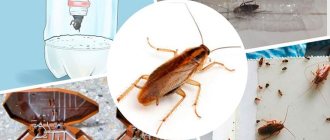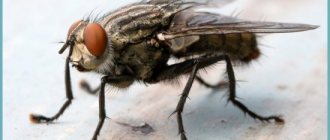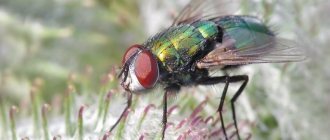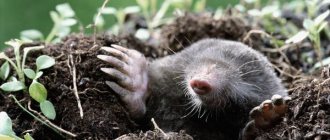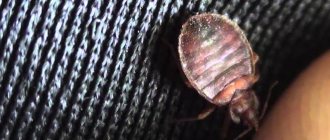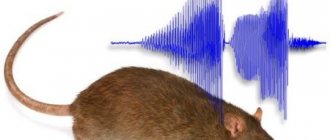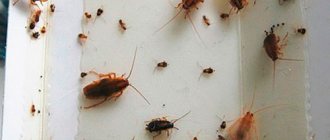How wasps behave
Wasp and its prey.
At the beginning of the season, females, fertilized in the fall, wake up and will become queens - the builders of the house and the founders of the whole family. They begin to build the first rows of honeycombs and lay offspring.
Closer to mid-summer, a large number of aggressive, young individuals appear. They continue to build and look for food for the larvae. That's when they are the most dangerous.
How to attract hornets and wasps
Wasps and hornets can be attracted by a large number of foods from fruits to spoiled fish. Practice shows that the most attractive baits for them are:
- a mixture of beer with honey or simply sweetened beer
- strong-smelling syrup
- fermented raspberries or grapes
- fish.
Of course, in each specific case you need to use exactly the bait that will not disturb the atmosphere of the place. For example, even those wasps that would never visit the area will flock to fish with a scent, but for a person it is not very pleasant to be near such bait.
How to catch a wasp
Catching a wasp with your bare hands is a completely thankless task. Not only is it almost impossible to do this, but sudden movements provoke insects into aggression.
You can catch wasps using traps. You can make them yourself.
From a plastic bottle
Bottle trap.
The easiest option is to cut a plastic bottle. You need a container of 1.5 or 2 liters. What happens next is this:
- The neck is cut off into a quarter of the bottle so that the rest is three times larger.
- The main part inside needs to be lubricated with vegetable oil so that the walls are slippery.
- The cut-off upper part is lowered into the bottle, neck down, to create a funnel-like shape.
- Bait is poured inside. It can be fermented wine, beer, a mixture of fat and meat waste.
- Set the bait and wait for the victim.
Possible modifications
Wasp trap in action.
Such traps can be made in different modifications:
- holes are made to hook elastic bands on which you can hang the trap on a tree;
- at the bottom they install elevations in order to place protein bait on it - a piece of meat or offal;
- The junction of the funnel and the bait can be wrapped with tape so that the edges do not move.
How to get rid of unwanted guests
So, it is clear what damage wasps can cause to an apiary, a garden, as well as to the inhabitants of a suburban area, but the fight against hornets should only be carried out if the proximity to them poses a real danger to crops, bees, humans and animals. Of course, if insects have built a nest in the attic, under a shed, on a tree in the garden, in a barn or bathhouse, you will have to get rid of it.
Destroying a nest
Unfortunately, there are no humane ways to combat wasps, but in order not to suffer in “combat operations”, a person needs to be properly prepared for them. Before destroying hornets, you must wear thick clothing, closed shoes, gloves, a scarf and a hat. Protect your eyes with tight-fitting goggles (even better, a gas mask or beekeeper’s net will protect your face from stings). In any case, you should not leave even a small area of the body exposed.
The best time to destroy a nest is from dusk to dawn. While there is no sun, the inhabitants of the colony do not show any activity. By the way, using a flashlight for illumination is not recommended. How to deal with hornets in this case? You need to take a lighting device with a red filter with you. Insects do not react to its rays.
An effective remedy for wasps and hornets is an insecticide. The nests are sprayed with it, which after 15-20 minutes are collected in a plastic bag. Then they are burned. Insects can be poisoned with Dichlorvos, Fufanon, Karbofos, etc. Sometimes night treatment of nests, including those built on tree branches, is carried out with boiling water.
It happens that wasps settle in tree hollows. Their colony can be destroyed by filling the bottom with insecticide and sealing the hole with tape, putty or putty.
It is easier to deal with hornets in the spring. During this period, insects are inactive, and their colonies are not so developed. If wasps have previously settled on the site, then finding their nests is not difficult.
Repelling hornets
Hive fumigator
There is one remedy for hornets that does not kill them, but only repels them. Any living creature is afraid of fire. The smell of smoke signals wasps that they need to escape from the approaching fiery elements. Some gardeners deceive the instinct developed by millions of generations of hornets by fumigating their nesting sites with smoke. Sometimes frightened insects change their “registration”. However, you should not guarantee a 100% fumigation result.
A little about the bait
To choose a bait that will really work, you need to understand the life cycle of these insects.
in spring
The emergence of queens begins in the spring. They lay the first larvae and feed them protein. This is when food of animal origin is needed. Then fat and meat waste are used as bait.
in autumn
In the second half of summer and early autumn, wasps need a large amount of food in order to stock up on nutrients for the winter. Therefore, they are lured with sweet drinks.
When are traps better than other methods of fighting?
The wasp and hornet trap is ideal for catching insects in areas where there is no nest. The explanation for this fact is simple - if the hornets do not return to their home from the garden or garden due to falling into a trap, after a few weeks they will completely stop visiting this place.
But catching a hornet in an apiary is a more difficult task, since its bait can also attract bees. In addition, the hives themselves are a more desirable object for these predators than the usual honey bait.
To protect the apiary, it makes sense to first find the location of the hornets’ nest and hang a trap directly next to it. With proper observation, it is quite easy to determine where the hornet lives - as a rule, this insect settles in tree stands near agricultural lands, so their nest can sometimes be discovered in just one excursion.
Review
“Once when I was young, I chased hornets from the site and looked for their nests. An interesting process, but tedious. Find a hornet, catch it, tag it, track it... But it definitely works. Now I just hang traps near their evidence, but right away, since April. Result: hornets never touch the apiary. But they are caught regularly until the end of summer, and in large quantities.”
Igor, Kyiv
In addition, a trap for wasps and hornets can be used in all situations when there is no rush to remove these insects. For example, it makes sense to fight wasps during the period when the summer cottage is not visited. In this case, the trap can be hung here and left for several weeks, and during your next visit you can simply throw out the caught insects.
It is also useful to read: Photos of hornets and descriptions of interesting features of their life
However, there are situations when hornets and wasps need to be caught quickly and immediately: they can interfere with the work necessary at the dacha or outright harm the apiary. In this situation, their homes should be destroyed as quickly as possible. To do this, in the dark, you need to remove the nest itself and lower it into a bucket with a rag moistened with ammonia. The second extermination option is to simply treat the removed nest with insecticidal preparations.
However, despite the seemingly simple methods of dealing with hornets, there are cases when it was necessary to call the Ministry of Emergency Situations to destroy the nests of these insects. Fortunately, such situations are quite rare, and when dealing with wasps and hornets, in most cases you can get by with traps.
How to check effectiveness
The first wasps should be trapped within a few days. Then it will be clear that it works well. If the bottle remains empty, you need to change the location or filling.
If the bottle is full, you need to carefully empty it. It is just very important that all the insects inside are dead, otherwise they will be very aggressive. Moreover, they will pass on information about the danger to others.
Corpses need to be disposed of properly - they release a substance that attracts others. Therefore, they need to be buried or drained into the sewer.
What baits are best to use?
To successfully combat flying insects, you need to choose the right wasp bait. She should attract their attention with her smell.
Wasp baits that can be used in traps:
- 1 tbsp. l. liquid honey per 200 ml of warm water;
- 30 ml each of honey and fermented jam combined with 200 ml of white wine;
- 500 ml light beer with 2 tbsp. l. Sahara;
- 70 ml wine vinegar. 500 ml water and 2 tbsp. l. honey;
- jam with water in a ratio of 1:5.
The smell should spread in the air far beyond the device. Therefore, to strengthen it, you can add a little yeast (1/3 tsp) to any of these baits. The smell of fermentation works flawlessly. Such wasp bait must not only be poured into the traps, but also the walls and entrance holes of the device must be lubricated with this liquid.
Safety precautions
Hanging trap.
It must be remembered that it is better to avoid all contact with wasps. They, especially when they feel threatened, become aggressive. If there are any living individuals left, you will need to wait or shake the bottle a little so that everyone is in the water. Carry out cleaning in a timely manner!
Safety precautions must be followed:
- Place traps in a secluded place.
- Unload only dead insects.
- Make sure no bees get in there.
- Do not use toxic substances.
Types of traps
All traps can be divided into 4 groups:
- A simple mechanism with a flat surface.
- Device with cut holes.
- A container with funnels through which insects enter.
- Technical means.
A trap installed on the site will help reduce the number of insects, and the living conditions will become more comfortable, because with their bite insects not only cause discomfort, but can also cause harm to health.
Trap models: their pros and cons
You can get rid of an unpleasant neighborhood in different ways. The most effective method is the use of insecticidal preparations. But this is not always possible, especially when someone in the family has a high sensitivity of the body to substances that make up poisons. Therefore, you often have to abandon the use of solutions and sprays and think about how to make a pest trap or purchase a ready-made one.
There are many different models on the market today. But the principle of their operation is the same - luring insects using bait into an isolated structure. The smell of food attracts them and they climb into the body of the device, from where they are no longer able to escape.
This is how industrial traps work, such as:
- "R-Plast".
- "Raptor".
- Wt-220.
- BS 1201104.
The undoubted advantages of these devices include the absence of toxic chemicals and ease of use. They can be placed anywhere, both in the house and in the yard or garden. And you don’t need to worry about how to make a trap.
Swissinno, Swiss made trap.
The advantages also include:
- Multifunctionality. They can be used to control mosquitoes, flies, moths and other parasites.
- Reusable use. You just need to change the bait periodically.
- Environmental Safety.
- Have no effect on bees.
- Affordable price.
There are traps that use ultraviolet radiation instead of bait. But the range of such a trap is limited.
All insects that are attracted by light and heat fall on the energized metal mesh and die from the effects of electric current.
What to do if wasp traps don't help?
In exceptional cases, even with the constant capture of a large number of wasps, their number in the area may not seem to decrease. In such situations, you either just have to wait until the grapes or raspberries go away, or find their nest in the vicinity and destroy it.
In high-density gardening communities, wasps will almost certainly take up residence on someone's property. By going around your neighbors, you can eventually find the “lucky one” who has their nest, or often several at once, hanging in his attic or closet. In addition, in apiaries or in the vicinity of abandoned areas, you can catch a couple of wasps with leather gloves, tie scarlet ribbons around their abdomen, release them and watch where they fly. In just half an hour you can find their nest.
Sources
- https://7ogorod.ru/prochee/lovuska-dla-os-iz-plastikovoj-butylki.html
- https://SdelaySam-SvoimiRukami.ru/5231-kak-sdelat-jeffektivnuju-lovushku-dlja-os-iz-plastikovoj-butylki.html
- https://GdeKlop.ru/osy-i-pchely/samodelnyi-lovushki/
- https://MrKlop.ru/zhalyashhie/osy/kak-sdelat-lovushku-dlya-os.html
- https://bezbukashek.ru/sredstva/lovushki-dlya-borby-s-osami
- https://beetlestop.ru/lovushki-dlya-os/
- https://klopkan.ru/osy/delaem-lovushku-dlya-os/
- https://7ogorod.ru/prochee/lovuska-dla-os.html
- https://apest.ru/osy/kak-izbavitsya-ot-os/lovushki-dlya-os/
- https://klop911.ru/shershni-i-osy/osy/lovushka-dlya-os.html
[collapse]
Possible harm from wasps in the garden
Wasps are a significant obstacle to safe and comfortable outdoor recreation and living in suburban conditions. Insects feed not only on plant juice and fruit pulp; they are attracted to many foods, fresh fish and meat. They can actively search for rot in garbage cans and gather in clouds over carrion. They should be feared because they carry many infectious diseases.
Apiaries especially suffer from wasp infestations: they not only look for sweets, but also kill bees - they feed their larvae with them; at least 6-7 traps are needed throughout the entire territory. Their bites are painful and can become a source of infection with pathogenic microflora or severe allergies, including anaphylactic shock.
Wasps live in highly organized colonies, the numerous inhabitants of which are constantly in need of food, and there is a high probability of causing significant damage to the harvest of garden beds and fruit crops. Thanks to the presence of intelligence, insects use warnings of danger; they protect their relatives by swooping in as a swarm
During the warm months, colonies increase rapidly, so it is important to exterminate them near houses where there are children.
Advantages of homemade structures
DIY traps. have a number of advantages:
- Cheapness. All of them are made from a bottle or other used plastic container.
- Environmentally friendly. They use natural products as bait rather than toxic chemicals.
- Ability to cover large areas. Such traps can be placed in any necessary place.
- Energy independence. They do not require batteries or an electrical connection to operate.
- Ease of maintenance. It is enough to empty the container from time to time and dispose of pests.
But it should be borne in mind that it will not be possible to get rid of all wasps in this way, but it is quite possible to secure your home or dacha for a while.
Related posts:
